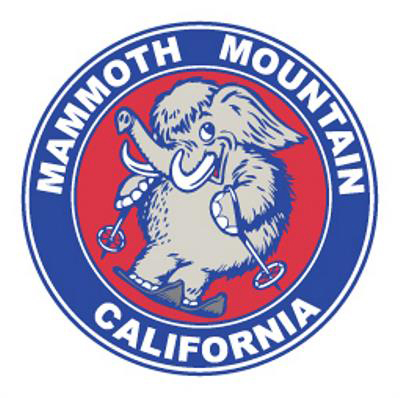How the Snowmaking System works at Mammoth Mountain Ski Area
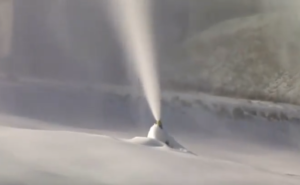
The Mammoth Mountain Ski area has one of the best snowmaking systems in the country.
It’s the main reason Mammoth Mountain has been able to open in early November every year since the system was installed back in the Summer of 1990.
As soon as Mammoth has the right weather conditions, they can start making snow and have snow all winter long, even if they get no natural snow at all.
The Key Elements
To start up the Snowmaking Guns, six key elements need to take place before crews can begin to make snow:
Cold temperatures
Low humidity
Compressed air
Water
Snowmaking Guns and Canons
Groomers

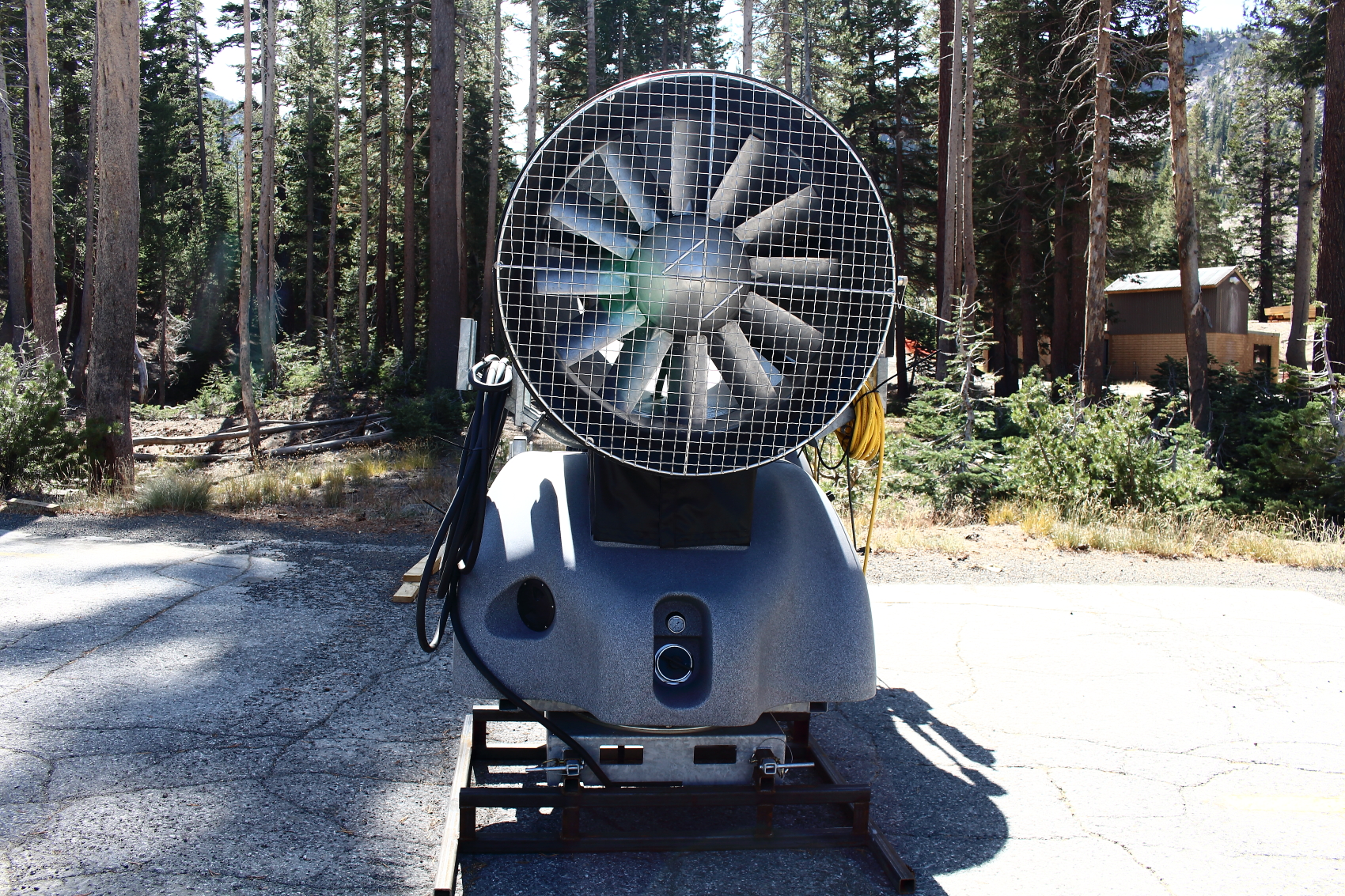
The Wet Blub Factor
Aside from air temperature, the Snowmaking staff at Mammoth Mountain Ski Area keeps a close eye on the Wet Bulb. The Wet-bulb Temperature is a combination of the air temperature and the humidity and is the most critical indicator for snowmaking.
A Wet-Bulb Temperature in the low to mid-20s means the Mammoth Mountain Snowmaking Crew can even make snow at or above 32 degrees in some situations.
The bottom line is as the temperature and humidity drop, the amount of snow made per hour goes up.
When temperatures are at 32 degrees or warmer, the snow they make is like solid cement, and it’s excellent base-building snow, but it takes several days to get a run open.
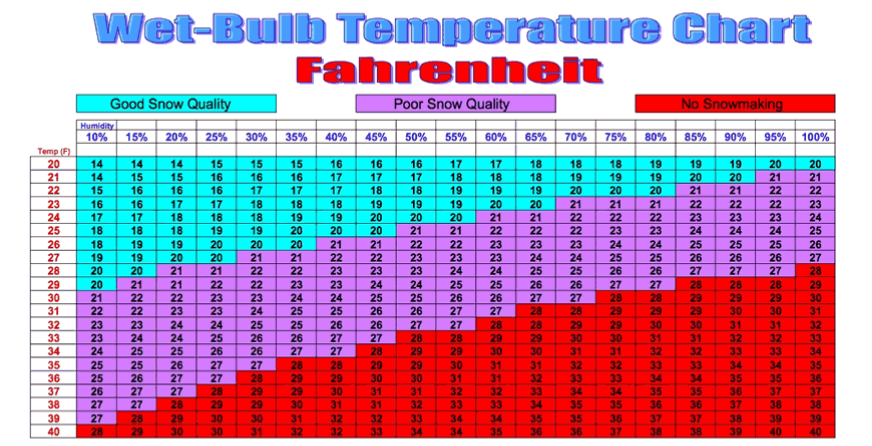
The Simple Process
Multiple Compressors create the compressed air, which is then pushed through miles of snowmaking pipes that line the ski area runs.
Parallel snowmaking pipes are used to pump air and water up the mountain to the snowmaking guns.
Water is drawn from the snowmaking pond located at MC Coy Station and several groundwater pumps that are refreshed every spring and summer from the snowmelt coming off Mammoth Mountain.
The Snowmaking Guns and Cannons serve as the mixing chamber for the water and air that blow the snow that will start and help build a base for a long season.
Why Manmade Snow?
Machine-made snow is more durable than natural snow and is essential for ensuring a good base on the main groomed outruns that give you access to 5 Lodges and Outposts.
Snowmaking is also essential for hosting world-class events in the Mammoth Mountain Unbound. Without snowmaking, the parks that get built would only be possible in the bigger winter seasons.
Natural vs Manmade Snow
Natural snowflakes have 6 arms, or dendrites, that spread away from the flake’s core and create the symmetrical crystals that make them so pretty — but also make them so fragile!
Machine-made snow, on the other hand, is a simple ball of snow — no arms to break off and get compacted down, thus being more durable for creating and maintaining a base and building a World-Class Snow Park.
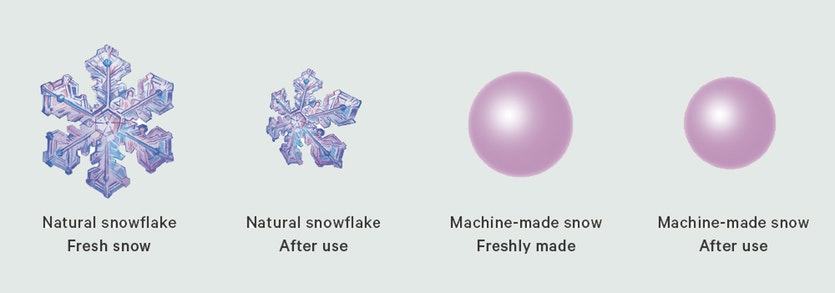
The Snowmaking and Grooming Crew
The final touch in the snowmaking process is the Mammoth Mountain Snowmaking Crew!
They start the season in late Summer, replacing underground snowmaking lines that need repair and laying new pipes in some years to expand the system.
Once the right weather conditions arrive, the snowmaking crew is on call 24 hours a day, 7 days a week, taking advantage of ideal conditions the moment they hit the hill.
All Night Long.
They work all night to prepare the mountain for you to enjoy skiing, riding, and tubing.
Even when we don’t get to make snow on a particular night, the grooming staff will be hard at work all night to get the slopes looking and feeling like there is a nice fresh coat of snow — look at that corduroy!
In conclusion
There is a lot that goes into snowmaking at Mammoth Mountain, with several departments and millions of dollars in equipment working together. It all starts with the blessing of ideal snowmaking conditions.
Want to see if the snowmaking team has started making snow yet? Check out the webcams.







